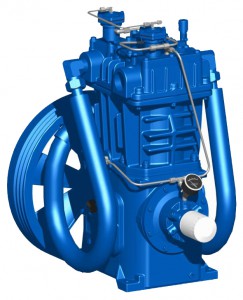Fuels stored in tanks, including gas and oil, emit vapors that contain methane, propane, butane and other substances. The fumes from these materials are noxious and potentially flammable. In addition to being an environmental and safety hazard, these escaping vapors can also cost the operator money in terms of lost fuel. A vapor recovery system can capture these fumes and return them to the storage tank before they can escape into the atmosphere.
What Is a VRU?
A vapor recovery unit (VRU) is a specially engineered compressed air system that reduces the emission levels produced by fuel vapors. Depending on the model, it can capture up to 95% of these potentially harmful vapors while lowering air pollution. It’s also possible to convert the recovered vapors into usable fuel.
What to Look for in a Vapor Recovery System
There are several important factors to consider when selecting the most appropriate vapor recovery system for your operation:
- Volume and flow rate
- Chemical composition of the gas or oil
- Level of liquid content in the fuel
- Pressure and temperature of the gas or oil to be recovered
- Discharge pressure and temperature
- Availability of a power source to drive the vapor recovery pump, compressor and other system components
- Presence of carbon dioxide or hydrogen sulfide in the gas or oil
- Potential for contamination from atmospheric oxygen
Quincy’s Line of Vapor Recovery Compressors
A compressor is an essential element of any vapor recovery system. Quincy Compressor offers a wide assortment of screw, reciprocating and rotary vane compressors for virtually any vapor recovery process or application.
Quincy rotary screw gas compressors, for example, can deliver maximum gas flow with minimum horsepower. These compressors feature an innovative direct-drive rotor profile that provides consistent and reliable performance. They’re also designed, engineered and manufactured to provide the durability you would expect from any Quincy Compressor product.
The exclusive triplex bearing configuration offers a calculated life expectancy of up to 130,000 hours. The positive displacement gear-type fluid pump keeps the rotors and bearings fully lubricated, which helps to prolong compressor life by keeping major repair and maintenance issues to a minimum.
Oil-Flooded Screw Compressors
The oil-flooded screw compressor is the most versatile technical solution for either dry or wet gas compression applications. The oil-flooded screw compressor provides the flexibility to adapt to rising discharge pressure requirements. Rotary screw compressors are cost-effective in handling high gas volumes in field gathering and vapor recovery services.
With a broad range of volumes from approximately 15 mscfd to 2 mmscfd and differential pressures up to 350 psig for single-stage models, the oil-flooded screw compressor has proven itself time and again to be an excellent choice for virtually any low to medium pressure application.
The rotary screw compressor design employs two helical rotors that intermesh. Oil is injected into the low-pressure end of the rotors. Gas also enters the compressor at the low-pressure end. The oil and gas mix travels down the length of the rotors where it is compressed. In this particular compressor design, the oil is both the cooling medium and the compression medium.
Typical applications include vapor recovery, wellhead compression, medium pressure gas boosting, landfill gas recovery and casing head pressure reduction.
 Rotary Vane Pumps
Rotary Vane Pumps
Rotary vane pumps have been utilized for over 50 years in low-pressure compression applications. The relatively simple design of rotary vane compressors offers comparatively low initial cost and ongoing maintenance compared to other compressors utilized in low-pressure gas management.
Rotary vane pumps are excellent in relatively high volume/relatively low-pressure differential applications. Volumes from approximately 20 mscfd to 2.5 mscfd are obtainable at differential discharge pressures up to 60 psig for single-stage models.
These positive displacement machines utilize a slotted, eccentrically mounted rotor. Blades or vanes ride in and out of the slots and slide out due to centrifugal force. The vane contacts the inside of the cylinder wall. As the rotor turns, the gas is swept into a decreasing space, thereby affecting compression. This simple design allows for years of trouble-free service and makes rotary vane compressors an attractive option for low-pressure services.
Typical applications include vapor recovery, wellhead compression, medium pressure gas boosting, landfill gas recovery and casing head pressure reduction.
Quincy QRNG
The QRNG is a reciprocating gas compressor series featuring heavy-duty cast iron construction for superior strength and durability. These compressors also include an advanced pressure lubrication system, low-lift valves and rebuildable connecting rods. Choose between single-stage 2-34 horsepower and 13-33 two-stage units that provide the low-cost gas compression you need.
Other key QRNG features include individual valve pockets that simplify preventive maintenance and high-efficiency cast-iron cylinders. This air compressor type also has an intercooler with large circular fins for maximum heat dissipation and lapped cast-iron valve seals that prevent the need for a discharge line check valve.
Contact Us to Learn More About Our Vapor Recovery Compressor Products
Contact the authorized Quincy Compressor distributor in your area to learn more about our vapor recovery pumps and compressor products. You can also contact us directly for additional information.
Contact Us Learn More Find a Dealer Near You
Last Updated on August 15, 2022 at 9:15 am EST

